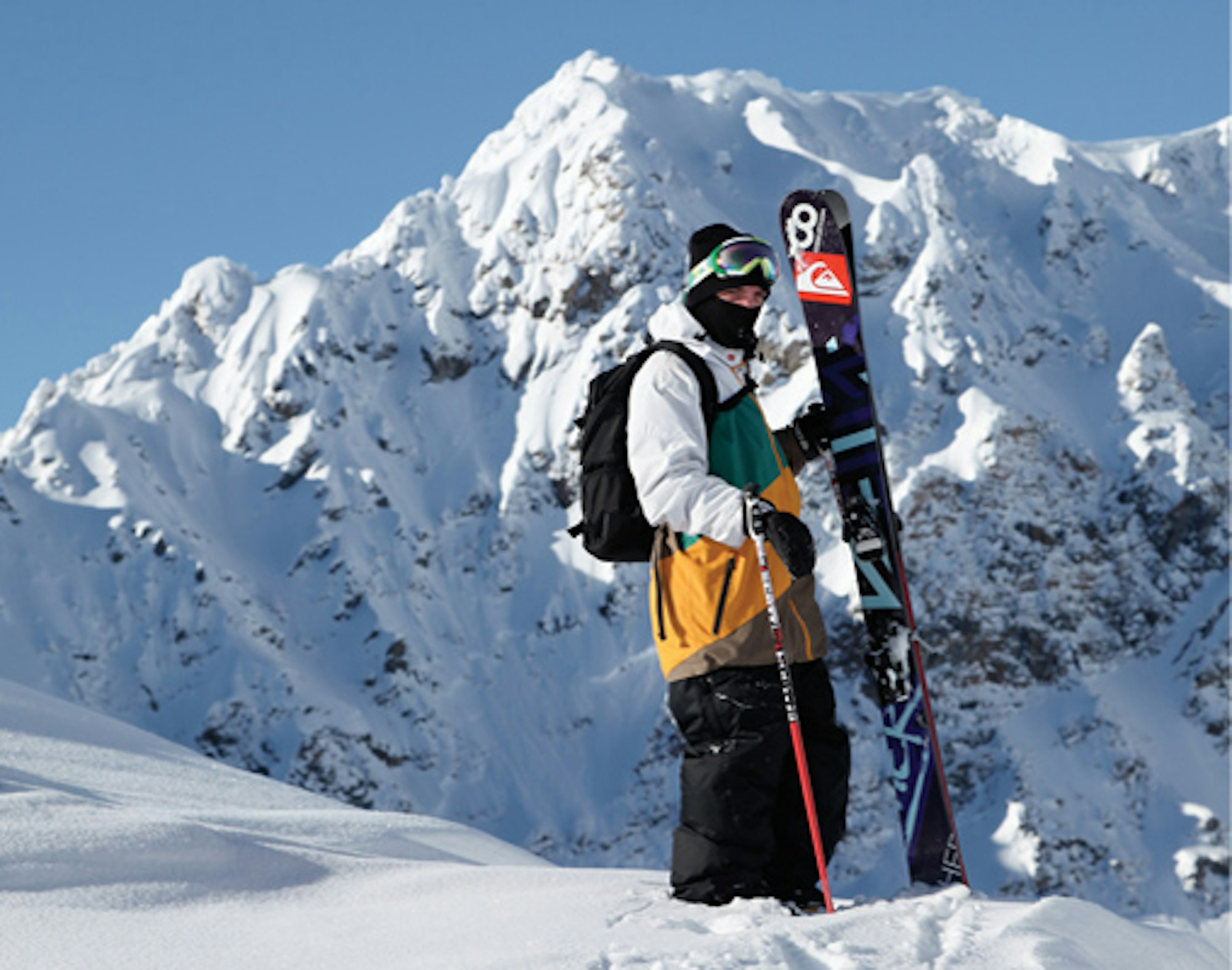It was more than a decade ago when a 15-year-old Candide Thovex hiked into the backcountry with filmmaker Kris Ostness. A teenage Frenchman in a foreign land, he brought his style and grace to the freeskiing world with one awe-inspiring jump that put him on the global stage as one of the biggest talents in the game. To the click of camera motor drives, Candide arrived on the scene as a disruptive example of what skiing would become.
But Candide was never really overly concerned with the scene. His skiing has always been bold and aggressive; his manner off the hill shy and unassuming. He has let his skiing speak for him, preferring to stay tucked under a pom-pom wool hat, while he quietly earned the sport’s highest honors: X Games gold and World Freeride champion. It’s not hard to argue that he’s the sport’s most well-rounded athlete—ever.
Watching Candide ski is bearing witness to a powerful, almost surreal level of connection with the mountain. He combines all elements of freestyle, alpine and freeride into a spellbinding mix of athletic power on the hill. But there is no hype or boasting from Candide. He really is a man of “few words” and as such, is notoriously difficult of the media to find and interview.
After several weeks of calling and emailing, I was able to triangulate Candide’s position to the island of Mallorca off the coast of Spain, where he was taking a quick two-day hiatus before the world tour of his two-year movie project, Few Words, kicked off in Paris. He spoke with me openly about his injuries, shyness, achievements and personal vision for the importance of well-rounded skiing. We also touched on the Olympics and what it’s like to be bitten by a wolf.
Q&A
You are a mystery man to many in North America. Given your success in the sport, why is it that we don’t know you as well as other skiers?
I’ve never been that much of a front-page guy. I’ve been pretty bad at [media communication]. I was pretty shy. I would like to let the skiing talk. I broke my back in 2007. And I was doing too many things at that time. I was kind of losing the pleasure of skiing. I wanted to get back to the pages of just skiing. And that’s what I did. I stopped everything else. The doctor said that I would not be able to ski and jump the way I used to. I went away and just wanted to get back into it. That’s when I did Candide Kamera. I left everything else on the side. Just skiing. At the time, we didn’t know what we wanted to do, but then finally we concentrated on one thing. We put more cinematic style into it.
You burst onto the scene in the States when you were just 15. We were all like, “Who is that and where the hell is he from?” And of course, you are from La Clusaz. What do they put in the water there?
I learned everything there. My father took me out when I was 2. It’s a place called Balme. This is where I used to do my event. The terrain is a natural snow park. When I was a kid, I was skiing every day over there. I was doing a lot of mogul skiing. [Candide was French national mogul champ at 14.] We had coaches, and I had the chance. They would always take us out and ski in that place in Balme. For them it was more important for us to have a ski base. When snowboarding got famous in France, I had been learning everything from there. When I came to the US, before that I hadn’t ever skied any other place.
What are the moments in a run down the Balme that make you the skier you are?
It is bumpy, very bumpy with big domes everywhere. It’s amazing, a natural terrain park. It all goes back to bumps. I used to [have] all my in-runs in the middle of moguls. And the landings, too. You had to absorb the bumps, and there is nothing straight. We would follow the same run every day. There were many, many jumps between rocks, and between creeks you can do some jumps. It’s really a kind of a terrain park in a mogul field. We kept it natural. This was constant learning.
It is a huge leap from the Balme to Chad’s gap. What prepared you for that gigantic leap?
Well, I would wake up and look at Balme every day. And we would always try to go bigger and bigger. We would do gaps, and we would try to go as far as possible. When I got to Chad’s gap it was just a matter of the scale—and, of course, it was a matter of staying on your feet. And having the balls for it. But right away, I knew it was possible. There would be a lot of compression. I didn’t have big legs at the time. Actually, I still don’t! But it all goes back to Balme. It really shaped how I look at things.
You have had such a great long-term relationship with Quiksilver.
Fifteen years. Quiksilver picked me when I was 15. I always liked their vision. And you know, they are usually more about surfing, snowboarding and skateboarding, but they have always helped me out. We’ve always had this very strong relationship. There is a lot of trust. Fifteen years is a long time. I’ve been changing a lot of skiing sponsors but stayed with Quiksilver.
You have skied for Dynastar, Salomon, Rossignol, CoreUPT and now for Faction. Tell us about this sponsor and the relationship.
Super excited to work with Faction. Great people. We are doing a lot of projects together. We have a full Candide line of skis. I was skiing with CoreUPT and things were not super great; the business side was a challenge. I signed with Faction for five years. I don’t really want to move from brand to brand. For sure we are aligned in business and vision.
With other brands I couldn’t do the same things that I can do with Faction. I had a lot of good feedback on their product. They have amazing skis. I am very involved. We have been working a lot on the weight. For backcountry, well, I am not a big guy, you know. I need my ski to be light. I want to be able to launch straight into lines. We’ve been working on that.
How is the recovery from your injury in 2007?
I’ve been really lucky. We had a big jump for the Candide Invitational. I hit it, but was missing some speed. I landed on the knuckle and I broke my L1. It was bad. When you break your back, you are always very close to being paralyzed. The doctors said that I might ski again, but never the way I used to. Look, they are trained to be realistic—doctors don’t do what we do. And the mental side [of recovery] is very important. I knew I was going to ski again. I was confident in myself.
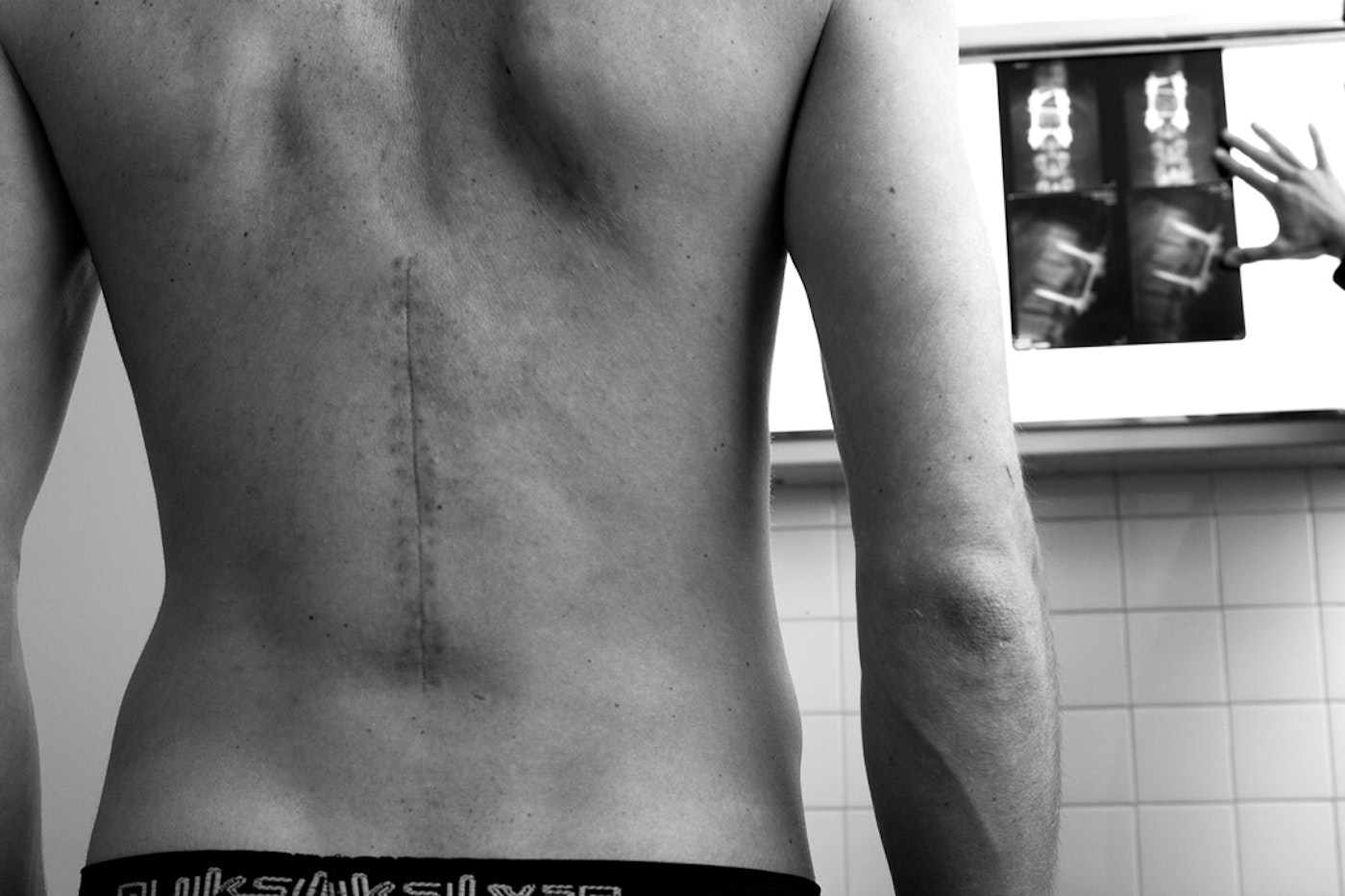
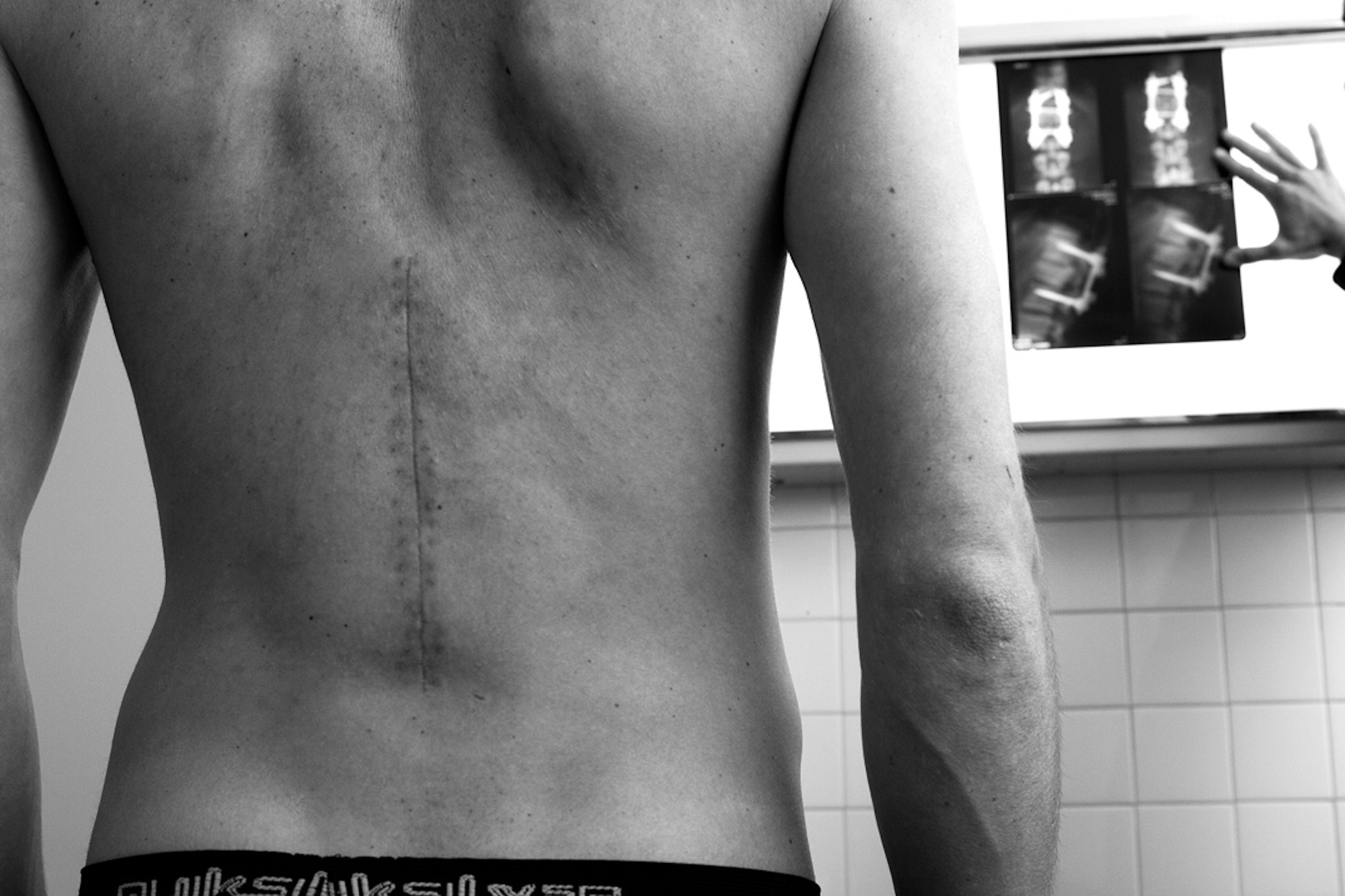
Photo by Christoffer Sjøstrom_Quiksilver
I did surgery right away, and went to a rehab center for a month and half. When you break your back, you either don’t get surgery, and you cannot move for months, or they do the surgery and you start to walk in two days. One year after the crash, I started to ski. But even a little bump would hurt. I started wondering, “Maybe those guys are right, I won’t be the same on snow again.” But I was getting better and better. I started skiing in the powder. It was softer and easier on my back. I just wanted to get back into skiing. Get fun back. One year later, I decided to do some competitions. First I did the Red Bull Linecatcher. I wanted to see where my skiing level was. And then, when I won I thought I should try the Freeride World Tour.
So the gnarliest big-mountain tour in the world, the Freeride World Tour, was rehab?
Ha! No, the rehab was before. This was a great feeling, thinking about what the doctor said the first time. I was super stoked and proved to myself that I could win a contest again. When I won the X Games in 2000 [big air], I blew my knee right afterward. Then it took me some time to get back to my level. By 2003, I was back, and that year I won again [pipe]. Then I blew my knee. It took time to come back. Then I won in 2007 [slope]. Then I broke my back at La Clusaz. The level of the sport always is getting better and better while I’m out.
You helped pioneer the sport in the halfpipe, in big air, in slopestyle. Now two of those three disciplines are in the Olympics. How do you feel about the Olympics?
It’s a good thing for the sport. It’s a wider audience for the sport. More brands, more resources for the athletes. But at the same time, I’m a bit scared because I want to keep the spirit [of the sport]. When we started that sport, we wanted to get away from everything that was too serious. We were inspired by snowboarding. It was about fun. I don’t see why we have to be like every other sport. I understand it needs to be more serious, training and all that. In France, I can see it. They are interviewing the coaches, they are calling the skiers “athletes.” And it is getting away from where we started. For the eyes of the kids, we want the sport to remain cool and fun. We don’t want it to be too serious. We wanted to get away from this. I know personally I was watching snowboarders because there was some creativity and freedom there.
As we approach Olympic competition, what are your feelings on style?
Every year there are new tricks. Some guys are still evolving. The sport right now is still good when it comes to style. The Olympics will not change that. Personally I will not enjoy watching a rotation contest. It is all about style and creativity. It is important to me to recognize that there are many types of skiing. No powder? Go in the park. Powder? Go ski the mountain and the powder. I understand that it is becoming very siloed, but my vision on this is that we have the chance to have a sport where one can do everything. Every type of skiing is complementary to the other. Freeriding will help your alpine skiing and vice versa. If you stick to just one thing in all this, you are going to get stuck. That is my vision. I always love to do everything.
And to answer the question, the sport is still going in the right direction. The style is still there. I just hope it is going to stay that way and that the Olympics don’t change that.
Do you pay attention to what other skiers are doing in movies and magazines?
I’m really not watching enough. But I like Henrik [Harlaut] and Phil Casabon. I like the style there. Tom Wallisch. Sammy Carlson has really good style.
You have a reputation for executing your tricks perfectly. How do you come up with your tricks and the inspiration for them?
The inspiration—if you go back to the beginning—was really coming from snowboarding. Snowboard tricks were a big influence at the time. Snowboard had style. It was clean. I wanted to do the same. I like to do things clean, and I think like everyone, you never want sketchy. Hey look, sometimes I’m sketchy, too. But skiing is all about style. I just ride. It comes naturally. I think that the base of everything in skiing is not to wonder too much. Just go with your own natural mental flow. It all comes to the mental. When I was competing earlier, I would work on tricks in my head, but you just have to try and try and not think too much. Just try to have fun. Everyone has their own style. That’s where the word freestyle comes from. That’s what makes the sport.
I think I used to worry too much when I did contests. I was stressed and stuff about contests. When I stopped worrying about the results, that’s when I won. When I was just having fun, that’s when I did the best. Some people have good results under pressure. But that’s not me.
Do you want to compete on the AFP World Tour or go to the Olympics?
It is itching me for sure. But I have not been riding park since I broke my back. I am focusing on other things, like my movie. But it is definitely something that is itching me. I’m not going to make any decisions. But I’m thinking about it. I just want to ski and not to wonder too much, to ski and see where my level is. If I feel good about it, then why not? I’m not 100-percent sure. After doing the Freeride World Tour for a while— and doing a lot of freeriding—it might be good for me to get back into park and see where I’m at.
What do you hope people take away from your film Few Words?
I don’t know. I was really, really involved in the editing of Candide Kamera. Matt Pain [Few Words director] has come in to the project and he used to do snowboard movies. He didn’t know much about skiing or me when he came into the project, which is good in a way. It is a story about me, with a lot of interviews. This is good because usually I don’t like so many interviews. This is a good external vision.
What was your best day of filming, and why?
I really enjoyed filming in Revelstoke. There was this peak that no one has skied before. Eagle Pass. First descent. It had never been ridden before. I don’t know if it is true or not but it was a great moment.
What was the worst day of filming? I heard a wolf bit you?
Yes, I was bitten by a wolf when we were filming in Canada. We were filming with a wolf because we try to focus on nature a lot. In the movie, we are filming animals because skiing is about nature. When you hike to the top and you see the chamois running around, this is what skiing is to me. Nature. We wanted to capture that. So we were filming, and this wolf came around and he bit my leg. It was not too bad. I just had a mark. The wolf was pretty pissed though. I was scared.
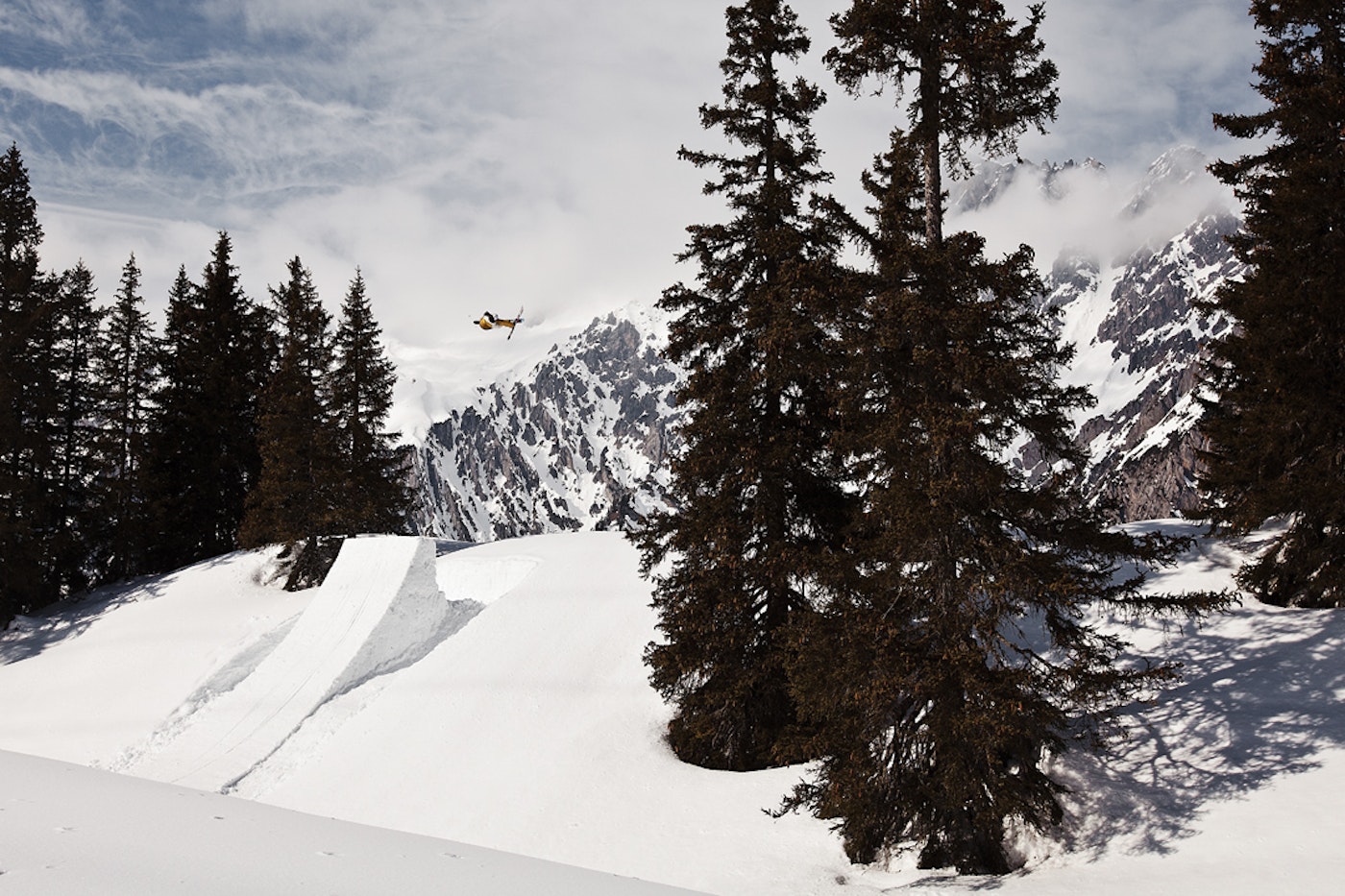

Candide in Arlberg, Austria. Photo by Matt Pain_Quiksilver.
Tell us about almost dying in Sonnenkopf.
Yes, we were skiing and filming in Austria. That was pretty scary. It was the first day we were there. There was some amazing powder. So we decided we were not going to film, “Let’s just ride for ourselves and have fun.” It was for the cameraman to have some fun. It was a place where skiing in the forest was forbidden. But there was such deep powder, we were like, we have to go.
We finished in a valley. So we followed a frozen river in the valley to go back to the resort. At one point, there was a steep drop, maybe 15 meters, and it was all blue ice. I had one cameraman with me and the other was way back on a snowboard. I said, “I’m going to go first and let you know, and hopefully there is no ice on the landing.” I did one turn and the ice broke around me. I found myself in a waterfall. I was stuck in it. I was holding on with my elbow, taking all the water on my face, a shower of super cold water. I was like that for half an hour. If I fell, I was going to fall into a black hole that led to the water under the ice and four or five meters of snow. I would have drowned. The first guy tried to help me, and he slipped and fell. By the time he got to me, I had been in there for 15 minutes. He tried to get me and dislocated his shoulder. I thought I was fucked. If I was going to fall, I was not going to recover. Luckily, two Finnish guys showed up and did a human chain, and they saved me. I was frozen. My left side was totally frozen. I couldn’t feel anything. We had to walk the forest for almost two hours. I had a puffy jacket, so I was soaked and cold. When we got back to the resort it was dark. I was really lucky in this situation. Really lucky.
How would you like to be remembered by the skiing community?
I don’t know. You know, I’m not wondering too much about this. I always try to do my best. The most important thing is to enjoy skiing. Sure the other things are cool, X Games, the Freeride Tour. But then—I don’t know, I’m just not wondering. The most important thing is the skiing. That’s it. My dream when I was a kid was to do something in skiing. And now I’ve been able to live my life in skiing. And that is enough for me.

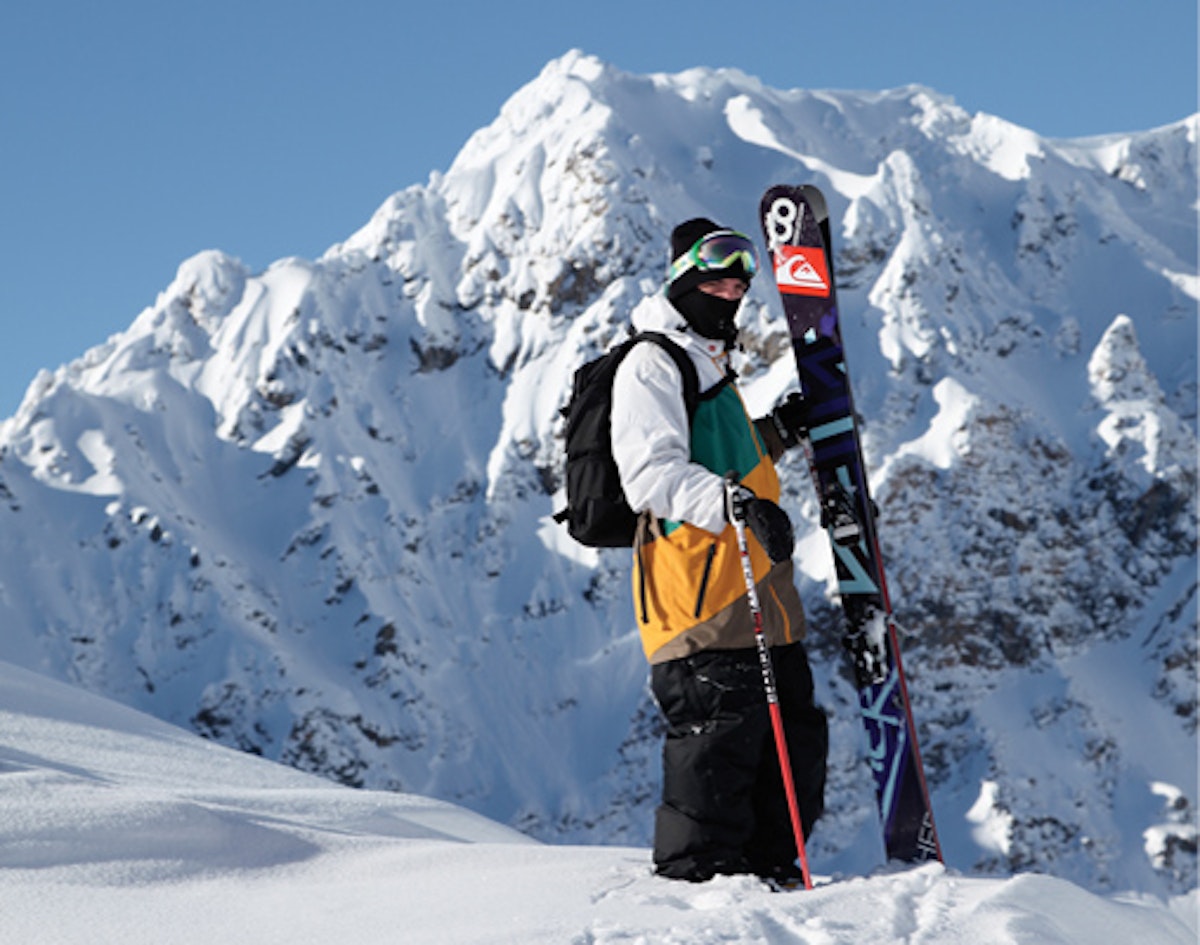

![[GIVEAWAY] Win a Head-to-Toe Ski Setup from IFSA](https://www.datocms-assets.com/163516/1765920344-ifsa.jpg?w=200&h=200&fit=crop)


![[GIVEAWAY] Win a Legendary Ski Trip with Icelantic's Road to the Rocks](https://www.datocms-assets.com/163516/1765233064-r2r26_freeskier_leaderboard1.jpg?auto=format&w=400&h=300&fit=crop&crop=faces,entropy)




![[GIVEAWAY] Win a Head-to-Toe Ski Setup from IFSA](https://www.datocms-assets.com/163516/1765920344-ifsa.jpg?auto=format&w=400&h=300&fit=crop&crop=faces,entropy)


